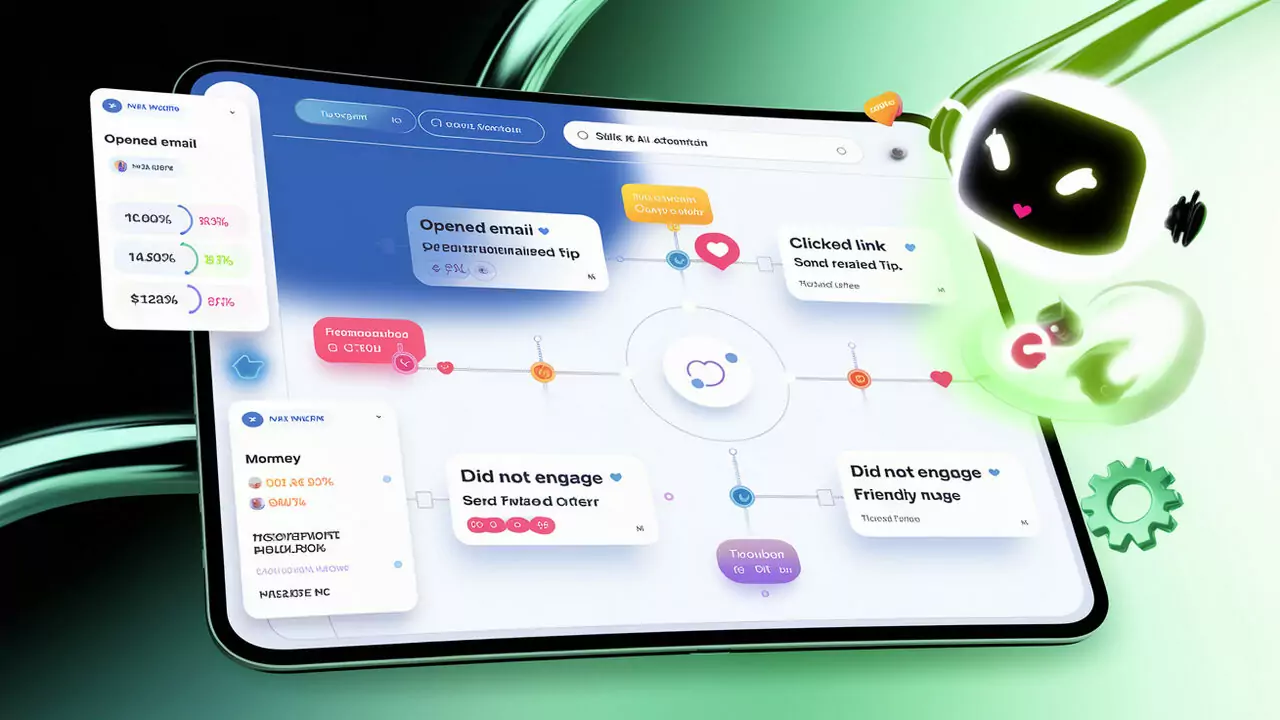
Personalizing Automated Follow-Ups: Create Tailored Email Experiences
A tailored approach that transforms mundane follow-ups into engaging, customer-centric conversations.
What You’ll Learn
- How to segment your audience for relevant and engaging email content.
- Techniques to integrate user behavior data for dynamic personalization.
- Step-by-step methods to build and test personalized email templates.
- Ways to improve open, click-through, and conversion rates through targeted messaging.
Problem Definition
Many automated follow-ups today fall into the trap of generic messaging. Such emails, lacking personalization, fail to connect with diverse audiences – leaving many subscribers feeling undervalued.
A one-size-fits-all approach not only erodes customer trust but also contributes to lower conversion rates and disengagement. Without addressing the individual needs and interests of recipients, your email campaigns may ultimately underperform.
Personalization is not simply a nice-to-have feature, but a necessity in creating a genuine connection with your audience.
For more details on how integrating CRM tools can further enhance your personalization efforts, check out our guide to CRM Integration for Email Personalization.
Impact Assessment
When your emails remain impersonal, key performance metrics take a hit. Reduced engagement is evident in lower open and click-through rates, and subscribers quickly lose interest.
This widespread disengagement is also apparent in higher unsubscribe rates. Customers are increasingly searching for online experiences that feel custom-tailored to their interests. Without personalization, no email campaign can truly build brand loyalty and trust.
For instance, a recent study highlighted that campaigns with personalized content experienced a significant increase in conversion rates compared to their generic counterparts.
Understand the role of trigger-based emails in delivering personalized content by checking out our article on Trigger-Based Email Strategies.
Solution Framework
Overcoming the pitfalls of generic follow-ups starts with a robust solution framework:
- Segment Your Email List: Use demographic and behavioral data to divide your audience into targeted groups.
- Integrate Dynamic Content: Employ dynamic content blocks that adjust messaging based on real-time user data.
- Leverage CRM Data: Ensure your CRM is updated continuously so that email content adapts to each subscriber’s journey.
Developing a multi-tiered segmentation strategy enables you to deliver customized messages that resonate. For further insights into dynamic personalization strategies, consider visiting this helpful resource at DigitalMarketer.
Implementation Guide
Implementing a successful personalized email campaign involves clear, step-by-step actions:
- Analyze and Segment Your Email List: Assess user data to identify distinct groups. Look into purchase history, browsing behavior, and demographic data.
- Develop Personalization Strategies: Use your CRM data to craft messages that reflect each segment’s interests and needs.
- Build Dynamic Content: Incorporate elements in your email templates that automatically adjust based on user behavior. This can include personalized product recommendations or location-based offers.
- Test, Measure, and Refine: Continually track campaign performance and adjust your strategies as needed to improve results.
For more strategies on refining your automation approach, check out our deep dive into Data-Driven Automation Refinement.
Also, for additional insights on industry standards, this article on current email marketing benchmarks might provide useful context.
Comparative Analysis Table
The table below highlights the differences in performance metrics between generic and personalized automated follow-ups:
| Metric | Generic Automated Emails | Personalized Automated Emails |
|---|---|---|
| Email Engagement | Low open & click-through rates | Significantly higher engagement rates |
| Conversion Rate | Low conversion and sales | Increased conversions and sales |
| Customer Retention | High unsubscribe rates | Improved loyalty and lower unsubscribe rates |
This structured comparison clearly shows the ROI benefits of tailored email strategies. Feel free to add any custom suggestions or metrics into this table as you refine your approach.
Frequently Asked Questions
- Why is personalization important in automated follow-ups?
- Personalization ensures that each subscriber receives content tailored to their interests and behaviors, leading to increased engagement and higher conversion rates.
- How can you use CRM data to personalize emails?
- CRM systems provide real-time user data, which can be used to segment your audience and adjust email messages to match individual preferences.
- What are dynamic content blocks in email marketing?
- Dynamic content blocks automatically modify the email content based on user data, ensuring each recipient sees information that is relevant to them.
- How does personalization improve customer retention?
- By addressing individual needs and preferences, personalized emails foster a connection with customers which in turn promotes long-term loyalty.
- What metrics indicate successful email personalization?
- Key metrics include increases in email open rates, click-through rates, conversion rates, and overall customer engagement.
Recap
We explored the significance of personalized automated follow-ups from understanding the core problems of generic messaging to implementing a robust solution framework. Jump to a specific section:
Next Article section
If you found these insights valuable, you’ll appreciate our upcoming discussion on analyzing automation performance to continuously refine your strategies. This next piece provides a deep dive into optimizing your campaigns with data-driven decision-making for even better results.
Explore more by reading Analyzing Automation Performance for advanced tactics and detailed metrics.
Join Our Community
Ready to put these strategies into practice? Join our free ‘Fightback Traffic Systems‘ WhatsApp group, where we share unique traffic strategies through in-depth webinar sessions and engaging community discussions—ideal for affiliate marketers seeking practical insights.
